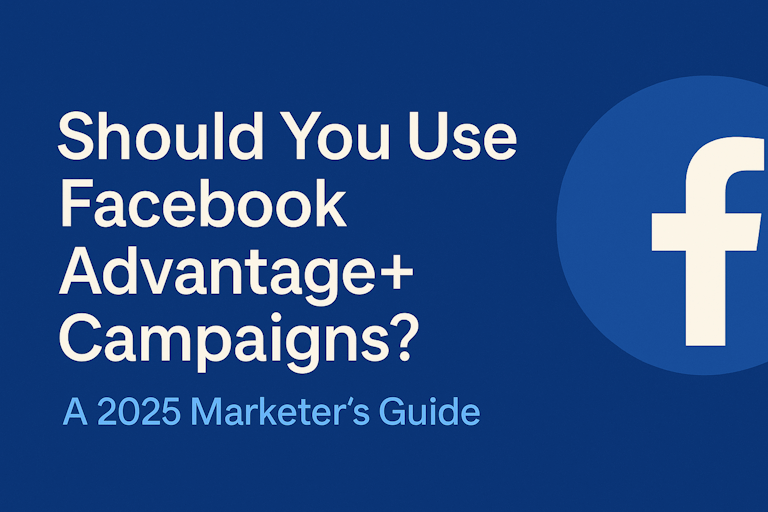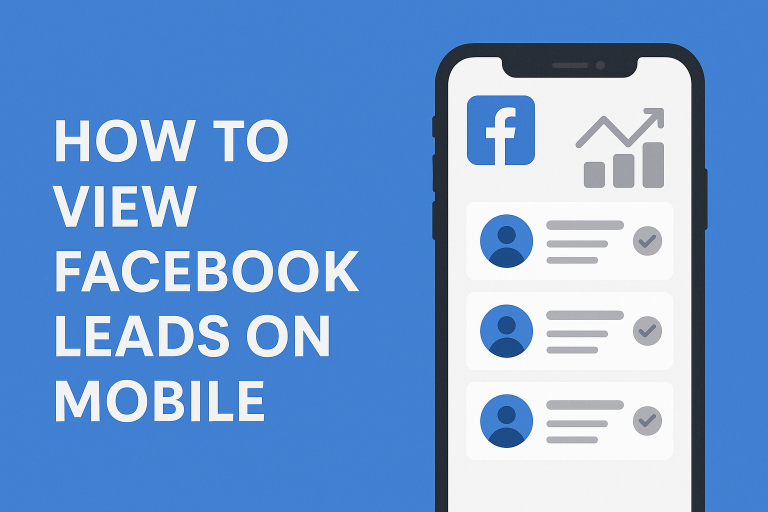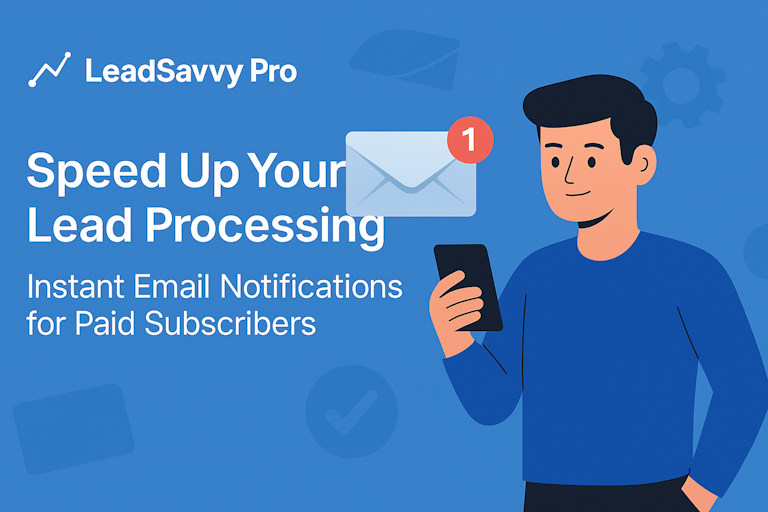Facebook Lead Management Simplified: A Guide for Busy Marketers
It’s no secret that managing leads on Facebook can be an overwhelming task for busy marketers and small business owners.
But by implementing a few key strategies, you can simplify and streamline Facebook lead management to unlock its full conversion potential.
In this guide, you’ll discover efficient workflows, automation tools, and data-driven insights to master Facebook lead generation, qualifying leads, and driving higher ROI from your campaigns.
Introduction: Mastering Facebook Lead Management for Marketers
Facebook offers incredible potential for generating leads and driving business growth. However, marketers often struggle to efficiently manage the lead data captured from their Facebook ads and Lead Forms. This results in lost sales opportunities and wasted ad spend.
In this article, we will explore key strategies for streamlining your Facebook lead management workflow. By setting up automated systems and simple organizational processes, you can save substantial time while boosting conversions from your Facebook traffic.
Unlocking the Potential of Facebook Lead Generation
With over 2.9 billion monthly active users, Facebook provides a vast audience for generating targeted leads. Their sophisticated ad platform enables granular targeting based on interests, behaviors, demographics, and more. This makes Facebook the go-to channel for many digital marketers.
Furthermore, Lead Forms provide an easy way to capture contact information and customer data directly on Facebook. By creating customized forms targeted to your audience and ad sets, you can generate highly qualified leads ready for further sales nurturing.
To fully capitalize on this potential, implementing efficient workflows for managing the lead data is critical. This will enable you to focus on strategy rather than getting bogged down in administrative tasks.
Navigating Common Challenges in Facebook Lead Management
However, optimizing your Facebook lead management process presents some common pitfalls:
- Data organization – Lead Form submissions export to difficult to manage CSV files rather than easy to search spreadsheets. This complicates the lead qualification process.
- Data access – Marketers often lack mobile access to newly captured lead data when working in the field rather than the office. This results in delays responding to promising new leads.
- Manual processes – Entering the lead data into CRMs and assigning tasks related to new leads typically involves tedious data entry and manual workflows. This is time-consuming and inefficient.
By streamlining these workflows through facebook lead management software and refined processes, you can overcome these roadblocks to better capitalize on your Facebook lead generation initiatives.
The Conversion Connection: Streamlining Facebook Lead Management
More than saving time on administrative tasks, optimizing Facebook lead management directly translates into higher quality leads and improved conversions.
With automated transfer of new lead data into centralized and easily searchable spreadsheets, sales teams can immediately access and act on promising leads. This level of efficiency and visibility enables faster sales cycles.
Likewise, with new facebook lead management systems, assigning tasks and moving new leads through sales funnels can happen automatically based on lead attributes and behaviors. This further accelerates conversion rates.
In summary, taking charge of your Facebook lead management process is critical for growth-oriented marketers. The time savings and conversions gains make this a high priority. By taking advantage of specialized software solutions and refining your lead qualification workflows, you can unlock the full revenue potential of your Facebook campaigns.
Where is lead manager in Facebook?
Facebook provides a built-in leads manager tool called Leads Access Manager to help businesses easily view and manage leads captured from Facebook Lead Ads.
To enable Leads Access Manager:
- Click the business account drop-down in the Facebook Ads Manager navigation menu and choose your business account
- Click the Gear icon next to your business account name
- Go to Integrations in the left menu, then click Leads access
This will open the Leads Access Manager where you can view, export, and organize all your Facebook leads in one place.
The Leads Access Manager provides a simple dashboard showing essential lead data like name, contact info, lead source, and timestamp. You can filter and search leads, view lead details, export leads via CSV, and more.
Enabling Leads Access Manager is the first step to streamlining Facebook lead management for your business. Once connected, you have a centralized lead manager to handle every lead captured from Lead Ads without tedious CSV exports.
How do I access FB leads center?
To access the Leads Center in Meta Business Suite, follow these simple steps:
Navigate to Business Suite
Log in to Business Suite and you’ll land on the Overview page.
Open Leads Center
In the left sidebar menu, click Leads Center. Alternatively, click All Tools at the top and find Leads Center under the Engage Audience section.
The Leads Center provides a centralized place to view and manage all leads captured from your Facebook and Instagram lead ads. Here you can:
- View and export new leads as they come in
- Segment and filter leads
- Create saved views to easily analyze leads
- View stats like total leads, quality leads, by source, etc.
With the Leads Center, facebook lead management is greatly simplified. No more downloading CSV files and cross-referencing data. Simply log in to Business Suite to access your leads.
Focus on high-value activities like lead follow-ups instead of administrative tasks. Consider LeadSavvy Pro to instantly sync Facebook leads to Google Sheets for even easier Facebook lead management.
How do I contact leads on Facebook?
Collecting leads is important, but following up with those leads is even more critical to convert them into customers. Here are some tips for contacting Facebook leads effectively:
Set Up Lead Notifications
Set up email or SMS notifications every time a new lead comes in through your Facebook lead ads. Getting alerts in real-time allows you to respond quickly while leads are still hot.
Build an Organized Follow-Up Process
Create a system to contact leads in a structured flow. Segment and prioritize leads based on data like source campaign and level of interest. Follow up within 24 hours and have set touchpoints to move leads down the sales funnel.
Track Leads in a CRM
Using a dedicated CRM platform to collect and manage Facebook leads streamlines organization and follow-up. It provides a centralized database for lead details as well as tools to automate and customize outreach. Popular CRMs like Salesforce even integrate directly with Facebook Lead Ads.
Personalize Your Messages
Make your outreach more meaningful by personalizing each message with the lead’s name and any detail like company or role you collected upfront in the Facebook lead form. Referencing submitted information makes your business interactions more human.
Establishing solid Facebook lead management processes early on will ensure no leads slip through the cracks as your campaigns scale up. Dedicate time to build efficient systems and you’ll reap long-term dividends.
How does Facebook leads work?
Facebook Lead Ads allow businesses to collect customer information directly within Facebook. When a user clicks on a Lead Ad, a lead form pops up where they can enter their contact details like name, email, phone number etc.
This allows marketers to capture leads in a seamless way without requiring the user to leave Facebook or go to a separate landing page. Some key benefits include:
- Convenience: Users can submit their details easily within Facebook instead of having to go to another website. This improves lead conversion rates.
- Targeting: Businesses can show Lead Ads to very specific audiences based on detailed targeting options available within Facebook ads. This allows generating more qualified leads.
- Built-in Analytics: Lead Ads provide transparency into valuable lead metrics like cost per lead, quality of leads etc. right within Facebook Ads Manager interface. No need for manual data consolidation.
So in summary, Facebook Lead Ads remove friction from the lead capture process through convenience and targeting. The built-in analytics also help optimize campaigns to improve ROI. For busy marketers struggling with lead management, Lead Ads are an easy way to consolidate the lead generation and reporting process.
Choosing the Best CRM for Facebook Lead Integration
Integrating Facebook Lead Ads with a customer relationship management (CRM) platform is crucial for centralizing your lead data and streamlining follow-up. Selecting the right CRM tailored for Facebook leads enables you to track engagement across the entire sales funnel.
Why CRM Integration is Essential for Lead Management
Unifying your Facebook leads into a CRM system provides numerous advantages:
- Consolidates leads from all campaigns: Having leads across social platforms like Facebook consolidated in one place gives you a holistic view of your lead sources and volume over time. This makes it easy to identify your best lead capture strategies.
- Enables personalized follow-up: With contextual data on each lead accessible in your CRM, you can segment and tag leads based on attributes like location, interests, lead score, etc. This allows you to tailor your follow-up messaging and offers.
- Provides insights for optimization: CRM analytics on lead quality, conversion rates, and sales cycle stages help you continually refine campaigns. This drives more conversions over time from your ad spend.
- Saves time on manual work: Automatically transferring Facebook form submissions into your CRM eliminates tedious exporting, transforming, and uploading tasks. This frees up time for strategic analysis.
In short, integrating Facebook Lead Ads with CRM software enables you to manage leads smarter, not harder. Data unification is key for understanding the ROI of your campaigns and optimizing the path to conversion.
Comparing the Best CRM Options for Facebook Leads
When selecting a CRM for consolidating Facebook leads, you want a platform designed for integrating social media data. Here are top options to consider:
- LeadSavvy: Specialized for effortless Facebook-to-Google Sheets sync. Free plan available. Lead Viewer enables easy access.
- Salesforce: Robust CRM with Facebook Lead Ads integration via API or 3rd party apps. Widely adopted but more complex.
- HubSpot: Intuitive CRM with native Facebook integration. Free CRM edition available but less customizable.
- Zoho CRM: Feature-packed CRM supporting Facebook API integration via Deluge scripts. Cost-effective but has a learning curve.
Evaluate the above Facebook-connected CRMs to determine which platform best fits your budget, use case requirements, and technical capabilities.
Linking Facebook Lead Center with Your CRM
For hands-on instructions on linking your Facebook Lead Forms to a CRM platform, see the following:
- Connect Facebook Lead Center to Google Sheets
- Facebook Lead Ads to Salesforce Integration
- HubSpot Facebook Integration Setup
The above tutorials walk through how to authorize API connections, configure data sync settings, map lead fields, and test transfers.
While setup steps vary across CRMs, the process typically only takes a few minutes. The integration immediately begins capturing form data in real-time, keeping your CRM lead records up-to-date.https://leadsavvy.pro/banner/inline/?id=sbb-itb-4a268ac
Crafting Tailored Facebook Lead Generation Campaigns
Facebook offers robust targeting capabilities for businesses to generate high-quality leads tailored to their ideal customers. By optimizing Facebook lead generation campaigns around the metrics that matter most to your business, you can capture subscriber data efficiently while providing value through lead magnet content.
Designing Tailored Lead Generation Ad Campaign Objectives
Rather than optimizing for link clicks or impressions, facebook lead management strategies work best when campaigns directly aim to spur conversion events.
Here are some recommended objectives to shape lead capture campaigns:
- Optimize for lead form submissions to capture high-intent subscribers open to receiving more information. Track form submission conversion events.
- Structure email signup campaign objectives around email signups to grow your subscriber list.
- Promote content downloads to generate leads interested in accessing gated assets. Measure content download events.
- Run conversion campaigns around high-funnel events like add to cart or initiate checkout to capture purchasing-ready leads if selling products.
Framing objectives this way provides Facebook’s machine learning algorithm clear direction to find ideal matching audiences primed for conversion. As opposed to impressions, this signals the type of desired action for the ad.
Campaign results then specifically reflect subscriber generation, enhancing precision in lead capture initiatives.
Creating High-Impact Facebook Lead Forms with Real-World Examples
Facebook Lead Forms allow capturing first name, last name, email or phone number, and up to 5 custom questions to qualify leads.
Here are Facebook lead form examples demonstrating effective use of custom lead form questions:
- Product company form: Ask lead scorer questions – “How soon do you intend on making a purchase decision?”, “What is your role in the buying process?”
- Service company form: Understand needs – “What challenges are you facing that you need help with?”
- Consultancy firm form: Qualify budget – “What is your estimated budget for this type of service?”
This provides instant lead qualification while submitting forms. Combined with Facebook’s lead scoring, it enables tailored follow-up based on lead value.
Utilizing Facebook’s Lead Ads for Optimal Conversion
Lead generation ads examples in action are Facebook Lead Ads – built-in ads that allow submitting lead forms without leaving Facebook.
Benefits include:
- Higher conversion vs. external landing pages
- Mobile-optimized lead capture
- Lead data seamlessly stored in Facebook Leads Center
This enables smoother lead submission leveraging Facebook’s native platform, circumventing additional hurdles of clicking away.
For best CRM for Facebook leads, consider LeadSavvy, which transfers Facebook Lead Form data into Google Sheets automatically. This consolidates subscriber management across platforms for streamlined Facebook lead management.
Effective Segmentation for Qualifying Facebook Leads
Organizing leads effectively is crucial for maximizing conversion rates. With facebook lead management tools, marketers can seamlessly categorize leads based on key traits to enable targeted follow-up campaigns.
Categorizing Leads with Custom Labels for Targeted Campaigns
Custom labels allow creating tags that categorize leads in a personalized system. For instance, leads could be labeled as “hot”, “warm”, or “cold” based on level of engagement. Labels might also denote:
- Demographics like age, gender, location
- Interests like hobbies, passions
- Buying stages such as awareness, consideration, decision
Labels enable building facebook lead form examples that make the most relevant offers to prospects based on these categories. Marketers can then create targeted drips, content recommendations, special promotions, and more tailored to each group.
Implementing a Lead Scoring Model Based on User Interactions
Lead scoring models assign priority levels using a point system that considers different engagement metrics. Common criteria includes:
- Form fills
- Email opens/clicks
- Content downloads
- Video views over 25%
- Page visits
Scores are then used to determine follow-up urgency. For instance, leads with over 50 points might get a call within 24 hours while those under 10 points receive an email nurturing sequence.
Scoring models help focus energy on hot leads while still providing value to cold leads.
Demographic Segmentation: Leveraging Facebook Insights
Facebook Insights reveals useful demographics about page visitors and converters under the “People” section that can inform segmentation. Metrics provided include:
- Age
- Gender
- Locations
Grouping leads by location enables tailoring messaging and offers. For example, leads living in warm climates might receive content about outdoor products while cold climate leads see winter gear recommendations.
Facebook Insights also shows the most liked pages amongst leads which provides their interests. Grouping leads by interests allows extremely targeted lead generation ads examples.
In summary, organizing leads into distinct categories based on labels, scores, interests and demographics is crucial for qualification and personalization. This enables tailored nurturing campaigns that resonate at each stage. Integrating facebook lead management tools makes the segmentation process easy.
Leveraging Automation for Streamlined Facebook Lead Follow-Up
Facebook Lead Ads provide a valuable source of sales opportunities. However, capturing leads is only the first step. The real challenge lies in systematically following up to convert those leads into customers.
This is where marketing automation comes in — automatically scheduling and tracking outreach campaigns to nurture your leads can make all the difference.
Crafting Lead Nurture Sequences for Consistent Engagement
A strategic Facebook lead management plan involves creating multi-channel nurture sequences to guide leads through their journey. For example:
- Welcome sequence – Send an automated email to new leads, introducing yourself and providing helpful resources related to their interests. Follow up over the next week with more valuable content.
- Education sequence – Share useful tips, product updates, industry insights etc. via email and Messenger to build authority and familiarity.
- Promotional sequence – Send special offers, coupons or trials to incentivize leads closer to a purchase.
Mapping out a schedule for touches provides a framework for consistent communication.
Craft segmented lists in your CRM to group similar leads, like by industry or lead source. Then develop tailored sequences that speak to each segment’s needs.
Real-Time Alerts: The Key to Timely Lead Follow-Up
The quicker you can reach out to a new Facebook lead, the higher your chances of connecting.
Set up real-time notifications through your CRM for whenever a new Facebook lead comes in. Receive mobile alerts to respond right away, while interest is hot.
Prioritize outreach to the most promising, sales-ready leads first. Schedule lower-priority outreach for later follow-up in nurture sequences.
Synchronizing CRM Workflows with Calendar Apps
Streamline productivity by connecting your CRM and calendar tools.
For example, sync scheduled tasks and appointments from your CRM to apps like Calendly. Automatically populate your calendar with lead outreach activities.
Enabling two-way sync also lets you easily schedule meetings with leads directly from Calendly back into your CRM.
Overall, setting up automated workflows between platforms removes tedious administrative tasks. This lets you focus energy on high-value personal outreach.
The key is mapping processes in your Facebook lead management workflow to maximize efficiency. Leverage automation to execute repetitive tasks so you can prioritize strategic lead nurturing.
Data-Driven Insights: Analyzing Facebook Lead Performance
Monitoring key metrics to optimize lead generation campaigns.
Harnessing Facebook Analytics for Lead Campaign Insights
Facebook’s native analytics provide valuable insights into lead campaign performance. By connecting your Facebook ad account to LeadSavvy, campaign metrics like cost per lead, conversions, and ROI can be tracked over time.
Here are some key Facebook analytics reports to analyze regularly:
- Campaign Cost and Results: View cost per result metrics to optimize budget allocation across campaigns. Analyze trends over time.
- Lead Delivery: Check delivery rate to inbox/spam folder. Low delivery signals issues reaching your audience.
- Lead Quality: Assess quality score for each lead to identify bad leads for exclusion. Improve targeting.
- Lead Volume: Track number of leads by campaign, ad set and ad. Identify top performers.
Monitoring campaign analytics ensures adequate budget to achieve lead goals. Adjust targeting or creative as needed based on performance.
Custom CRM Reporting for In-Depth Lead Analysis
Once Facebook lead data is available in the CRM, custom reports provide a detailed analysis.
Examples of CRM reports for optimizing facebook lead management:
- Lead Velocity – Days to convert leads by campaign
- Lead Quality Score – Rank leads from coldest to hottest
- Lead Source Breakdown – Volume and conversion rate by source
- Lead Lifecycle Stage – Volume in each stage of the funnel
Custom reports deliver actionable insights unavailable in Facebook analytics. Tweak lead scoring models or segment contacts for tailored nurture streams.
Optimizing Lead Forms with A/B Testing
Experiment with multiple lead capture form variants to optimize conversions. Useful tests:
- Field validation rules
- Form layout/placement
- Call-to-action copy
- Lead magnet headlines
Track conversion rate for each variant. LeadSavvy simplifies A/B testing by allowing form setup changes without code tweaks.
Evaluate statistical significance before declaring a winner. Iterate based on test results. Optimized forms improve lead quality and volume.
Conclusion
Analyzing campaign metrics, custom CRM reports and A/B testing work together to refine the facebook lead management strategy. Continued optimization ensures relevant, high quality leads to fuel business growth. Actionable insights can be uncovered at every stage – from initial capture to final conversion.
Navigating the Meta Leads Center: A Recap for Marketers
Integrating automation tools into your digital marketing operations is key for efficient Facebook lead management. By sending Facebook Lead Form data directly into tools like Google Sheets and CRMs, you remove tedious manual work and give your team instant access to leads.
Integrating Automation Tools for Efficient Lead Management
Facebook’s Meta Leads Center makes capturing leads easy, but extracting value from that data is still a challenge for many marketers. Luckily, various tools exist to facilitate automated lead handling workflows:
- Google Sheets – The LeadSavvy Google Sheets integration sends new leads to spreadsheets in real-time. View and manage leads from anywhere with the flexibility of Sheets.
- CRM Integrations – Sync your Facebook leads into CRMs like HubSpot, Salesforce, and more via tools like Pipedrive for organized lead tracking.
- Email Marketing – Send new leads to email services like Mailchimp to kickstart drip campaigns and lead nurturing sequences.
Streamlining lead data transfers eliminates tedious administrative work for you and your team. More time can be spent crafting high-converting ads and campaigns powered by lead intelligence.
Key Lead Management Workflows to Enhance ROI
With your lead pipeline flowing smoothly thanks to integrations, directing resources into the right lead management workflows drives growth. Target the processes with the highest ROI:
- Lead segmentation – Separate cold leads from promising prospects for tailored follow-up messaging. Recent research shows properly segmented leads convert at a 129% higher rate.
- Lead scoring – Define lead quality criteria to focus sales efforts on qualified contacts first. Consistently hitting higher tier leads boosts conversion rates.
- List building – Expand your marketing reach by capturing contacts for email nurturing. Studies by DMA indicate marketers see $44 ROI for every $1 spent on email marketing.
Doubling down on the processes that generate more pipeline opportunities gives you an advantage each month.
The Power of Testing and Analytics in Lead Optimization
Like with most marketing initiatives, data should drive your lead management strategy. Set up tracking to monitor key metrics:
- Lead volume over time
- Lead quality benchmarks
- Sales funnel conversion rates
- ROI per lead source
Continually test new lead capture and nurturing tactics, then analyze performance to find what works best. The brands seeing the most Facebook lead success embrace constant optimization fueled by data. A/B test ad creatives, landing pages, follow-up sequences, and anything impacting your pipeline. With an experimentation mindset, your cost per lead will steadily decrease.







